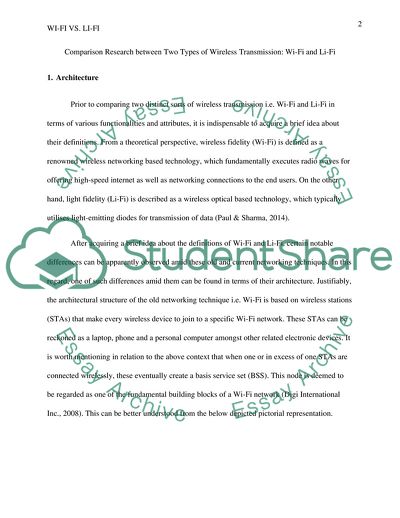Cite this document
(Comparison Research between Two Types of Wireless Transmission: Wi-Fi and Li-Fi Paper Example | Topics and Well Written Essays - 3000 words, n.d.)
Comparison Research between Two Types of Wireless Transmission: Wi-Fi and Li-Fi Paper Example | Topics and Well Written Essays - 3000 words. https://studentshare.org/information-technology/1880758-wi-fi-vs-li-fi
Comparison Research between Two Types of Wireless Transmission: Wi-Fi and Li-Fi Paper Example | Topics and Well Written Essays - 3000 words. https://studentshare.org/information-technology/1880758-wi-fi-vs-li-fi
(Comparison Research Between Two Types of Wireless Transmission: Wi-Fi and Li-Fi Paper Example | Topics and Well Written Essays - 3000 Words)
Comparison Research Between Two Types of Wireless Transmission: Wi-Fi and Li-Fi Paper Example | Topics and Well Written Essays - 3000 Words. https://studentshare.org/information-technology/1880758-wi-fi-vs-li-fi.
Comparison Research Between Two Types of Wireless Transmission: Wi-Fi and Li-Fi Paper Example | Topics and Well Written Essays - 3000 Words. https://studentshare.org/information-technology/1880758-wi-fi-vs-li-fi.
“Comparison Research Between Two Types of Wireless Transmission: Wi-Fi and Li-Fi Paper Example | Topics and Well Written Essays - 3000 Words”. https://studentshare.org/information-technology/1880758-wi-fi-vs-li-fi.


